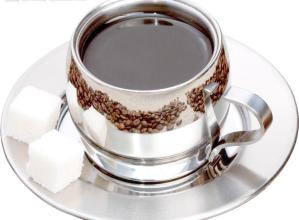Introduction to the flavor and taste characteristics of Honduran Coffee Santa Barara Manor
Honduras has had 139 coups since independence in 1821 and 1978, making it one of the most frequent coups in Latin America. In the 1957 general election, Ramón Villeda Morales of the Liberal Party won the presidency. In 1963, Osvaldo López Arellano, commander of the armed forces, staged a coup d'état under the auspices of the United States, overthrew Morales 'regime and was elected president in 1965. In 1971 Ramón Ernesto Cruz won the National Party election, but soon after taking office, Arellano launched another coup to power. In 1975, Juan Alberto Melga Castro, commander of the armed forces, staged a coup d'état to replace Arellano. In 1978, the commander of the armed forces, Policapo Paz Garcia, launched a coup and formed a military committee headed by him. The national emblem of Honduras was used in 1825. The national emblem was made of stone and made of huge Monsonikin.
Coat of arms of Honduras
Coat of arms of Honduras
The word tower symbolizes equality and justice, and the two square towers symbolize the independence and sovereignty of the country. The blue ocean represents Honduras 'geographical position. The blue sky and rainbow in the background reflect each other's yearning for the future. An oval white band with the words "Republic of Honduras September 15, 1821, Freedom, Sovereignty, Independence" written in yellow Spanish surrounds the pyramid, showing spiritual strength. The colorful arrows at the top represent the local aborigines, and the horns filled with roses on both sides hold up the rich natural resources. At the bottom, pines and oaks are evergreen, firmly growing strength and hope. The state summons the people and cultivates national consciousness with labor and honor. The Mayan houses symbolize Honduras, the birthplace of the glorious Mayan culture in history.
Honduras is a mountainous country in Central and North America with a population of more than 8.3 million and an area of about 112,000 square kilometers. Located in northern Central America. It is bordered by the Caribbean Sea to the north, the Gulf of Fonseca in the Pacific Ocean to the south, Nicaragua and El Salvador to the east and south, and Guatemala to the west. More than three-quarters of the territory is mountainous and plateau. Mountains extend from west to east, inland for lava plateau, multi-mountain valley, coastal plains. Tropical climate, coastal plains are tropical rain forest climate.
Honduras coffee is imported from El Salvador. Coffee production was lukewarm until the Brazilian frost of 1975. Brazil was hit hard, coffee production plummeted, while Honduras took advantage of the opportunity to "rise", coffee production soared from 500,000 bags to 1.8 million bags, and was looted. Since then coffee production in Honduras has really developed. For coffee production, Honduras is geographically no less favorable than neighboring coffee producing countries such as Guatemala and Nicaragua. Honduras has 280,000 hectares of coffee plantations, mainly small coffee plantations, most of which are less than 3.5 hectares. These coffee plantations account for 60% of the coffee production in Honduras.
In coffee plantations, because they are grown in mountainous areas, coffee beans are picked by hand and carefully processed to produce better coffee beans. Honduras harvests three million bags of coffee every year, providing a variety of coffee quality, has become one of the world's top ten coffee exporting countries, coffee producing areas are divided into six regions, located in the west and south: Santa Barbara (Santa Barbara), El Paraiso (El Paraiso), Copan (Copan), Baz (La Paz) and Gongmayagua (Comayagua) and Olancho (Olancho), the average planting height is more than 1100 meters above sea level. Coffee varieties are Arabica, 69% belong to HG "high coffee" grade, 12% belong to SHG "special highland coffee", 19% belong to CS. The main varieties are Typic, Bourbon, Caturra, Villa Sarch and Lempira.

Important Notice :
前街咖啡 FrontStreet Coffee has moved to new addredd:
FrontStreet Coffee Address: 315,Donghua East Road,GuangZhou
Tel:020 38364473
- Prev

Kenyan Berman Manor Coffee with a strong taste. Flavor Features. Boutique Coffee Introduction
Kenya is divided into seven provinces (Province) and one provincial district (Nairobi Province). The province is divided into districts (DISTRICT), townships (DIVISION) and villages (LOCATION). According to the new Constitution, the four-tier administrative structure will be changed to two levels, central and county (COUNTY). The 47 districts established under the new Constitution will be fully operational after the 2013 general elections. 7 provinces: Central Kenya
- Next

Introduction to the characteristics of coffee flavor and taste of Panamanian jadeite manor with citrus and floral aroma
The Panamanian flag was launched on November 3, 1904. The flag is rectangular and the ratio of length to width is 3:2. The flag consists of four rectangles of white, red and blue. White symbolizes peace; red and blue represent the former Panamanian Liberal Party and the Conservative Party respectively, and they are also symbols of the two parties' United struggle for the interests of the nation. The blue star on the white background on the upper left represents loyalty and integrity, and the red star on the white background on the lower right represents
Related
- Does Rose Summer choose Blue, Green or Red? Detailed explanation of Rose Summer Coffee plots and Classification in Panamanian Jade Manor
- What is the difference between the origin, producing area, processing plant, cooperative and manor of coffee beans?
- How fine does the espresso powder fit? how to grind the espresso?
- Sca coffee roasting degree color card coffee roasting degree 8 roasting color values what do you mean?
- The practice of lattes: how to make lattes at home
- Introduction to Indonesian Fine Coffee beans-- Java Coffee producing area of Indonesian Arabica Coffee
- How much will the flavor of light and medium roasted rose summer be expressed? What baking level is rose summer suitable for?
- Introduction to the characteristics of washing, sun-drying or wet-planing coffee commonly used in Mantenin, Indonesia
- Price characteristics of Arabica Coffee Bean Starbucks introduction to Manning Coffee Bean Taste producing area Variety Manor
- What is the authentic Yega flavor? What are the flavor characteristics of the really excellent Yejasuffi coffee beans?

